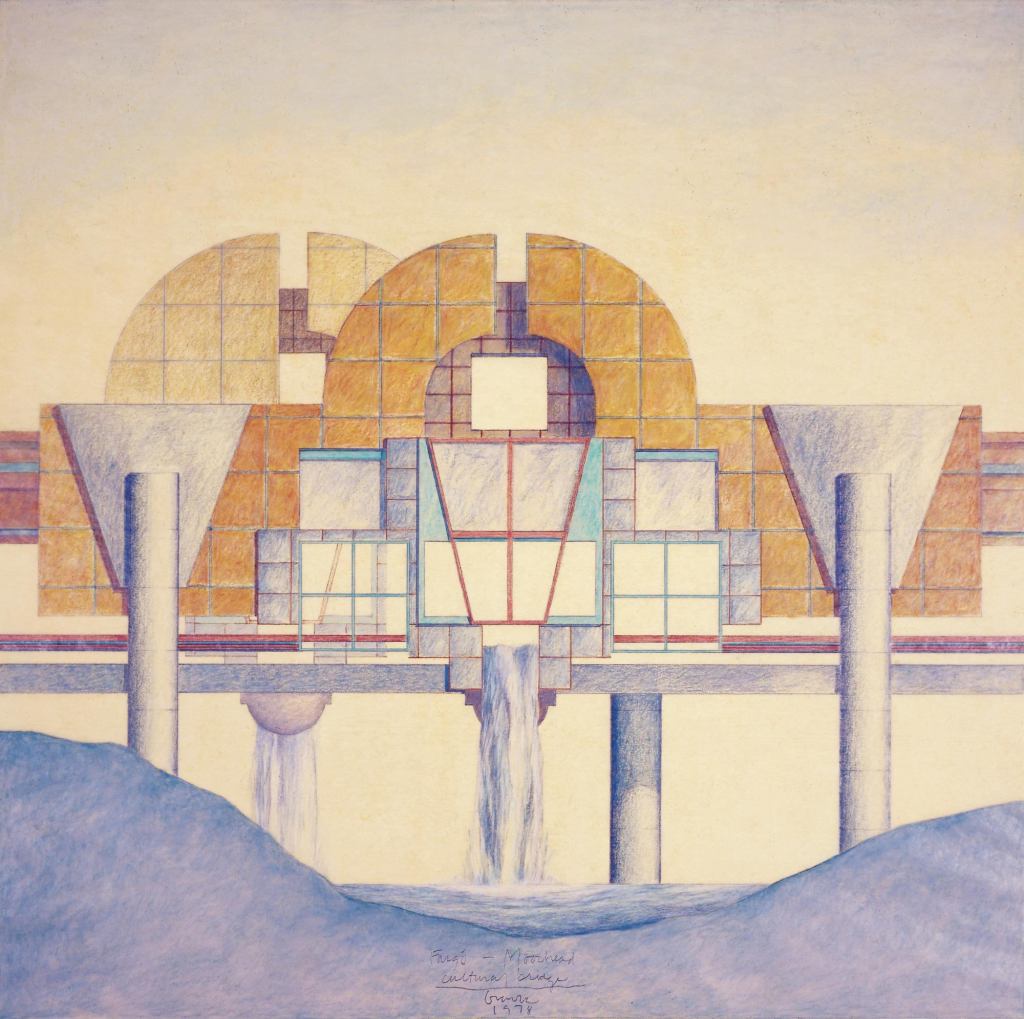In honor of their 1975 centennial, Fargo, N.D., and Moorhead, Minn., decided to build a “heritage and cultural bridge” over the Red River, which separates the two cities. Organizers envisioned not only a vehicular bridge, but also a Red River Valley heritage interpretative center, an art museum, a concert hall, a public radio station, and offices. A task force selected Michael Graves, FAIA, to design the bridge in 1976, and his scheme won a P/A award in 1979.
At the time, its postmodern aesthetic received most of the attention. The art museum “cornice” bridged performing arts facilities in Fargo and the interpretive center in Moorhead, displaying the richly allusive Classicism and highly sensitive urbanism characteristic of Graves’s mature work. What excited the architectural community, however, may have gone too far for Fargo.
In a November 1978 referendum, 53 percent of Fargo’s voters opposed funding the project. Moorhead continued to work with Graves on the design for the interpretive center, but that too was halted. A utilitarian bridge was built, and it stands there today, seemingly ready to take the building it was designed to support.
More than 30 years later, what seems most significant about the project was not its form and aesthetic, but instead its hybrid, infrastructural nature. In an economy in which cities will need to do more with less, using infrastructure to help fund civic projects, leveraging support from two different states and municipalities, and turning a bridge into a major public gathering place all seem like ideas we can build on.
1979 P/A Awards Jury
Fred Dubin
Barry Elbasani
Jules Gregory
Weiming Lu, Hon. AIA
Anthony J. Lumsden, FAIA
Constance Perin
Werner Seligmann
Bernard P. Spring, FAIA
